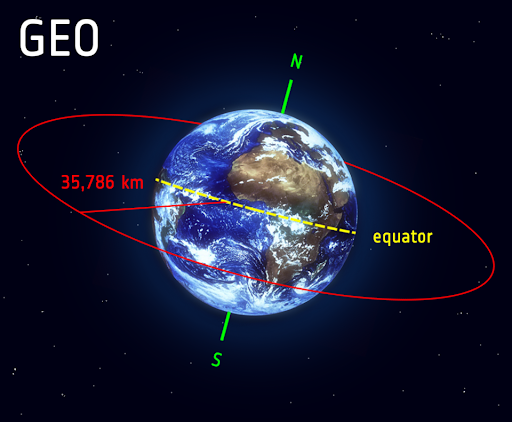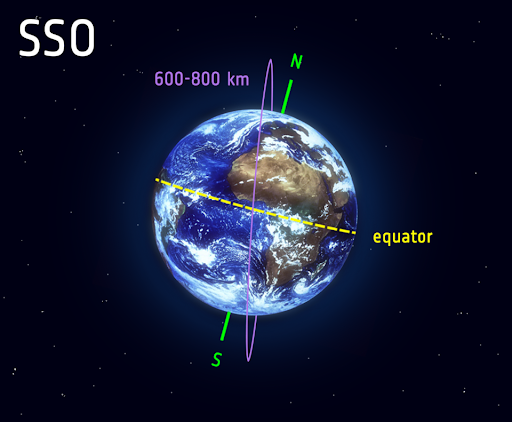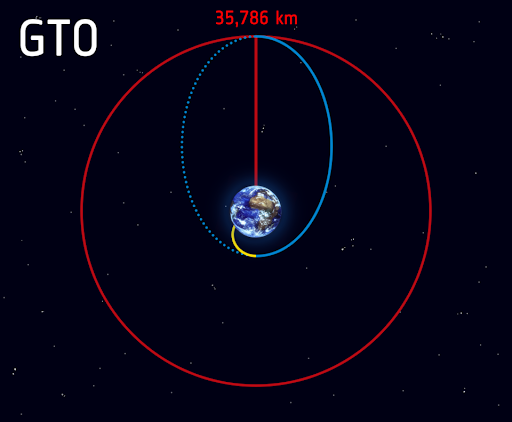Earth Observation satellite (EOS 04)
Why in News:
- ISRO plans to place, into orbit, an Earth Observation Satellite (EOS – 04) on board the PSLV C-52
- Polar Satellite Launch Vehicle (PSLV) is the third generation launch vehicle of India.
- It is a four-staged launch vehicle with first and third stage using solid rocket motors and second and fourth stages using liquid rocket engines.
- It is the first Indian launch vehicle to be equipped with liquid stages.
About earth observation satellites
- Earth Observation (EO) satellites help us to monitor and protect our environment, manage our resources, respond to global humanitarian disasters and enable sustainable development.
- They provide essential information on a vast number of areas, including; ocean salinity, ice thickness, crop health, and air quality.
About EOS-04
- ISRO plans to place the EOS-04 in a sun synchronous polar orbit.
- EOS-04 is a radar-imaging satellite, designed to provide high-quality images under all weather conditions for applications such as agriculture, forestry & plantations, soil moisture and hydrology, and flood mapping.
Orbits
There are many factors that decide which orbit would be best for a satellite to use, depending on what the satellite is designed to achieve.
- Geostationary orbit (GEO)
- Low Earth orbit (LEO)
- Medium Earth orbit (MEO)
- Polar orbit and Sun-synchronous orbit (SSO)
- Transfer orbits and geostationary transfer orbit (GTO)
- Lagrange points (L-points)
- Satellites in geostationary orbit (GEO) circle Earth above the equator from west to east following Earth’s rotation – taking 23 hours 56 minutes and 4 seconds – by travelling at exactly the same rate as Earth. This makes satellites in GEO appear to be ‘stationary’ over a fixed position. Geostationary orbits of 36,000 km from the Earth’s equator. GEO is used by satellites that need to stay constantly above one particular place over Earth, such as telecommunication satellites.

2. A low Earth orbit (LEO) is, as the name suggests, an orbit that is relatively close to Earth’s surface. It is normally at an altitude of less than 1000 km but could be as low as 160 km above Earth

3. Satellites in polar orbits usually travel past Earth from north to south rather than from west to east, passing roughly over Earth’s poles. Satellites in a polar orbit do not have to pass the North and South Pole precisely; even a deviation within 20 to 30 degrees is still classed as a polar orbit. Polar orbits are a type of low Earth orbit, as they are at low altitudes between 200 to 1000 km.

4. Sun-synchronous orbit (SSO) is a particular kind of polar orbit. Satellites in SSO, travelling over the polar regions, are synchronous with the Sun. This means they are synchronised to always be in the same ‘fixed’ position relative to the Sun. This means that the satellite always visits the same spot at the same local time. This means that the satellite will always observe a point on the Earth as if constantly at the same time of the day, which serves a number of applications
5. Transfer orbits are a special kind of orbit used to get from one orbit to another.

6. Lagrange points, or L-points, allow for orbits that are much, much farther away (over a million kilometres) and do not orbit Earth directly. These are specific points far out in space where the gravitational fields of Earth and the Sun combine in such a way that spacecraft that orbit them remain stable
To read about ISRO Mission of 2022 – https://officerspulse.com/isro-missions-2022/
References:
- https://www.thehindu.com/news/national/tamil-nadu/isro-to-launch-earth-observation-satellite-on-february-14/article38400805.ece
- https://www.esa.int/ESA_Multimedia/Images/2020/03/Polar_and_Sun-synchronous_orbit
